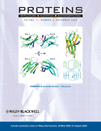On the accuracy of inferring energetic coupling between distant sites in protein families from evolutionary imprints: Illustrations using lattice model
Abstract
It is suspected that correlated motions among a subset of spatially separated residues drive conformational dynamics not only in multidomain but also in single domain proteins. Sequence and structure-based methods have been proposed to determine covariation between two sites on a protein. The statistical coupling analysis (SCA) that compares the changes in probability at two sites in a multiple sequence alignment (MSA) and a subset of the MSA has been used to infer the network of residues that encodes allosteric signals in protein families. The structural perturbation method (SPM), that probes the response of a local perturbation at all other sites, has been used to probe the allostery wiring diagram in biological machines and enzymes. To assess the efficacy of the SCA, we used an exactly soluble two dimensional lattice model and performed double-mutant cycle (DMC) calculations to predict the extent of physical coupling between two sites. The predictions of the SCA and the DMC results show that only residues that are in contact in the native state are accurately identified. In addition, covariations among strongly interacting residues are most easily identified by the SCA. These conclusions are consistent with the DMC experiments on the PDZ family. Good correlation between the SCA and the DMC is only obtained by performing multiple experiments that vary the nature of amino acids at a given site. In contrast, the energetic coupling found in experiments for the PDZ domain are recovered using the SPM. We also predict, using the SPM, several residues that are coupled energetically. Proteins 2009. © 2009 Wiley-Liss, Inc.




